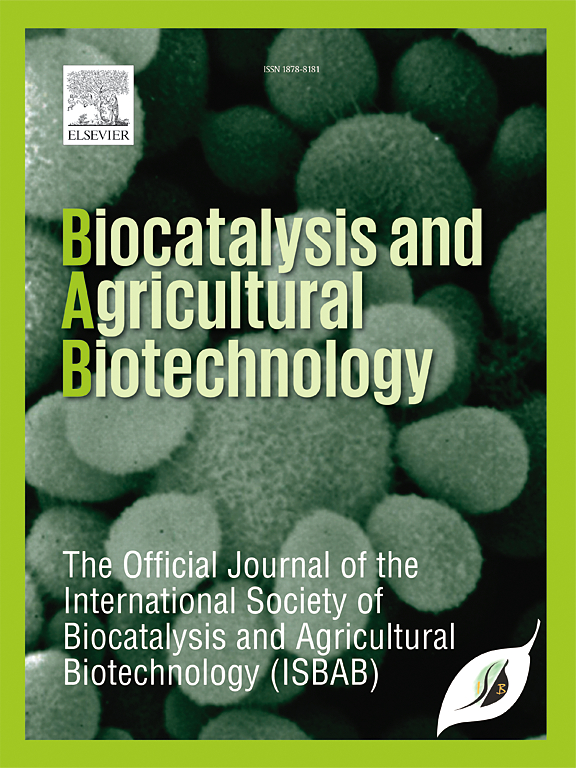Optimization of medium formulations for biomass vaccine production of gdhA derivative Pasteurella multocida B:2 using statistical experimental design
IF 3.4
Q2 BIOTECHNOLOGY & APPLIED MICROBIOLOGY
引用次数: 0
Abstract
The glutamate dehydrogenase (gdhA) gene of a pathogenic Pasteurella multocida B:2 was successfully inactivated to create an attenuated strain as a vaccine candidate against hemorrhagic septicemia (HS) in ruminants. This study presents a novel approach to optimizing the medium formulation for high-throughput mass production of a gdhA-inactivated P. multocida B:2, which is critical for scaling up vaccine production. Using response surface methodology (RSM) with a central composite design (CCD), we systematically investigated the effects of various medium components on biomass yield. Yeast extract, glucose, sodium chloride, and sodium phosphate were identified as critical factors, with yeast extract demonstrating a significant enhancement in biomass production, yielding 2.03 ± 0.15 mg/mL, compared to traditional peptone (1.30 ± 0.26 mg/mL) and inorganic nitrogen sources like ammonium chloride and ammonium sulfate (<1.0 mg/mL). Among carbon sources, glucose paired with yeast extract produced the highest biomass, while sucrose, white sugar, and soluble starch had minimal effects. Optimization through CCD identified the ideal concentrations of yeast extract, glucose, NaCl, and NaH₂PO₄ as 15.64 g/L, 1.91 g/L, 3.06 g/L, and 2.48 g/L, respectively, resulting in a 35% increase in biomass yield to 3.10 mg/mL. Yeast extract was the key driver of growth, with optimal concentrations between 5 and 20 g/L, while excess glucose, NaCl, and NaH₂PO₄ inhibited growth. Statistical analysis revealed that the quadratic polynomial model fit the data well (R2 = 0.8440, model F-value = 5.80, p < 0.05). The novelty of this study lies in the optimization of a medium that significantly improves biomass production compared to conventional formulations, providing a cost-effective and efficient solution for scaling up the production of attenuated P. multocida B:2. This optimized medium holds promise for advancing vaccine development against HS.
求助全文
约1分钟内获得全文
求助全文
来源期刊

Biocatalysis and agricultural biotechnology
Agricultural and Biological Sciences-Agronomy and Crop Science
CiteScore
7.70
自引率
2.50%
发文量
308
审稿时长
48 days
期刊介绍:
Biocatalysis and Agricultural Biotechnology is the official journal of the International Society of Biocatalysis and Agricultural Biotechnology (ISBAB). The journal publishes high quality articles especially in the science and technology of biocatalysis, bioprocesses, agricultural biotechnology, biomedical biotechnology, and, if appropriate, from other related areas of biotechnology. The journal will publish peer-reviewed basic and applied research papers, authoritative reviews, and feature articles. The scope of the journal encompasses the research, industrial, and commercial aspects of biotechnology, including the areas of: biocatalysis; bioprocesses; food and agriculture; genetic engineering; molecular biology; healthcare and pharmaceuticals; biofuels; genomics; nanotechnology; environment and biodiversity; and bioremediation.
 求助内容:
求助内容: 应助结果提醒方式:
应助结果提醒方式:


